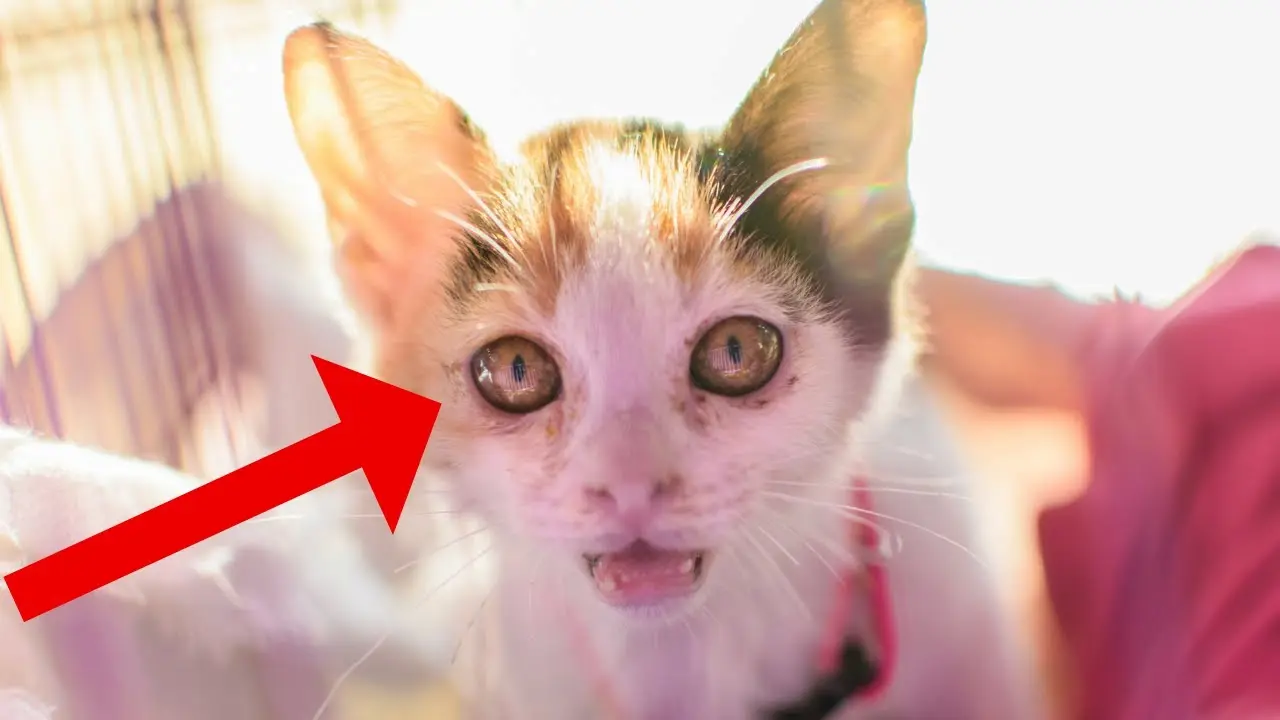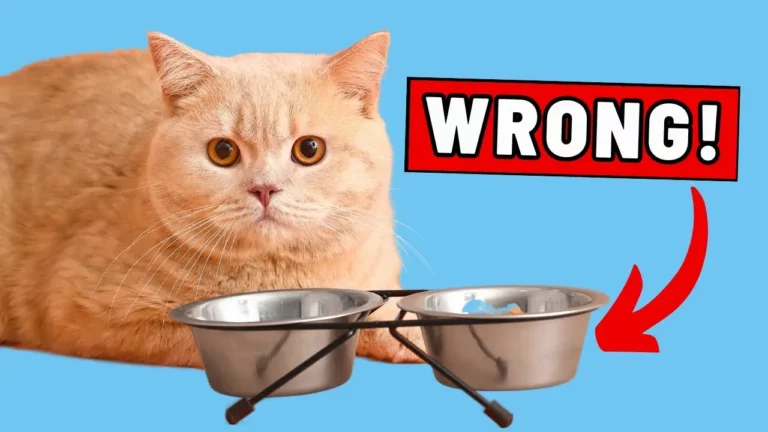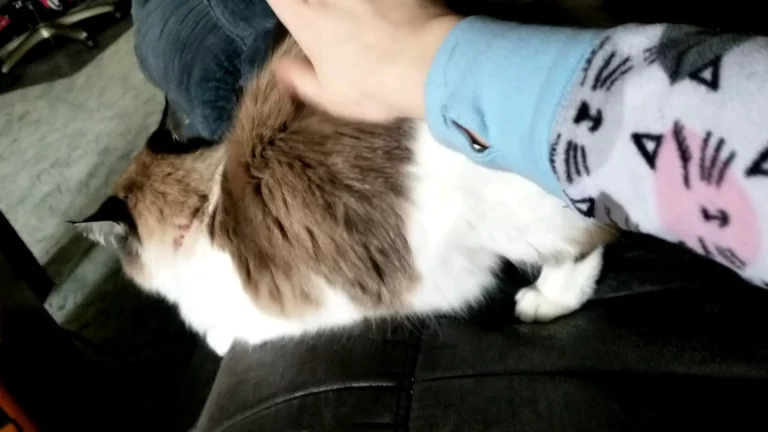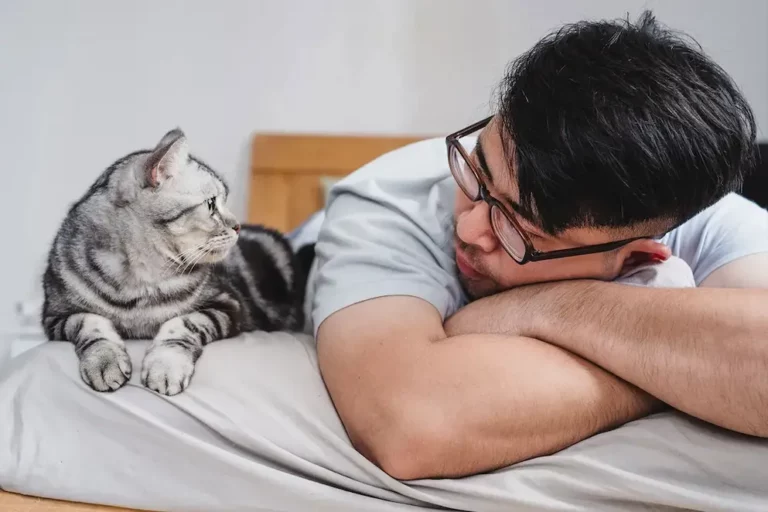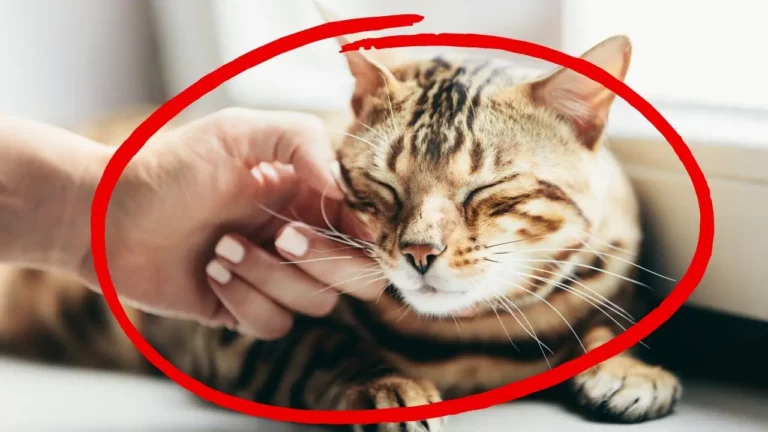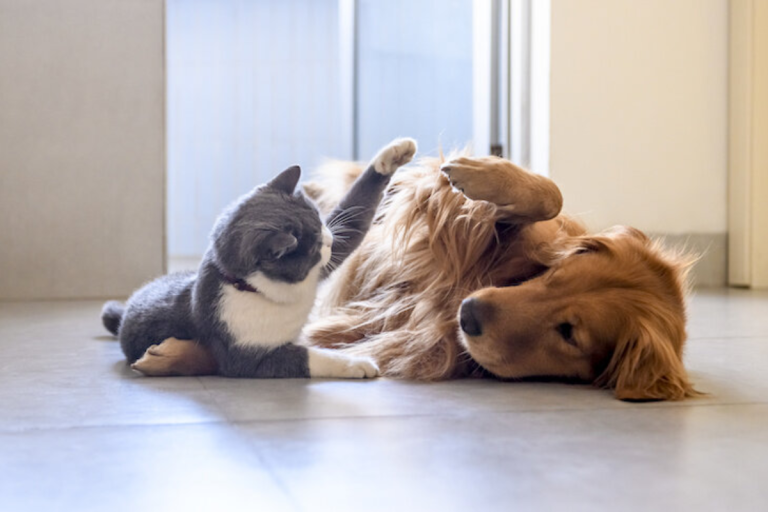The Mystery of Cat Tears: Why Do Cats Cry?
The phenomenon of cats crying is often misunderstood, as their tears are not typically a manifestation of emotions but rather a physiological response to various stimuli.
Unlike humans, cats produce tears to maintain eye health and lubrication, and excessive tearing can be indicative of underlying health issues such as allergies, infections, or blocked tear ducts.
Certain breeds are more prone to these conditions, making it important for pet owners to observe any changes in their
What are the potential causes and solutions for persistent tearing in cats, and how can owners guarantee their pet’s comfort and well-being?
Understanding Cat Tears
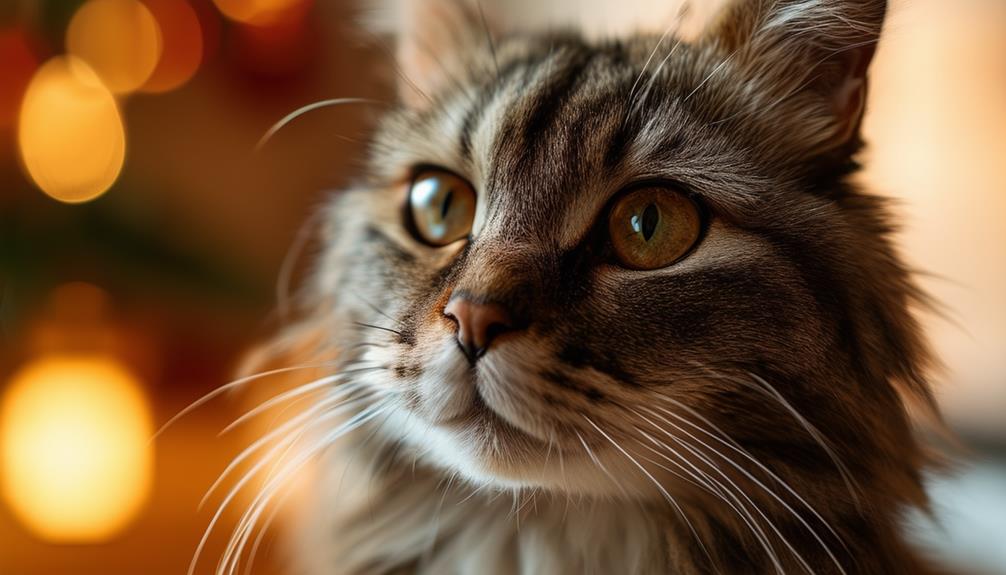
The physiology of
In healthy cats, tears are continuously generated and efficiently drained through nasal passages.
This natural process guarantees that the eyes remain clear of debris and adequately hydrated.
However, when tear production exceeds normal levels or drainage is obstructed, it can lead to watery eyes.
This phenomenon is particularly noticeable in certain breeds like Persians, known for their narrower tear ducts.
Regular tear production is essential for maintaining eye health, and any significant deviation from this balance warrants closer attention.
Common Causes of Tears
Identifying common causes of excessive tears in cats is critical for ensuring their ocular health and overall well-being.
Allergies to environmental factors such as pollen, dust, or household perfumes can provoke increased tear production.
Eye infections, including conjunctivitis, and physical injuries frequently lead to watery eyes, signaling a need for medical attention.
Blocked tear ducts, often due to infections or inflammation, cause tears to overflow rather than drain properly.
Additionally, respiratory infections and certain breeds like Persians, with naturally narrower tear ducts, are predisposed to excessive tearing.
Recognizing symptoms such as redness, consistent eye discharge, or behavioral changes can guide prompt action, allowing for early intervention and maintaining the well-being of your
Emotional Tears in Cats
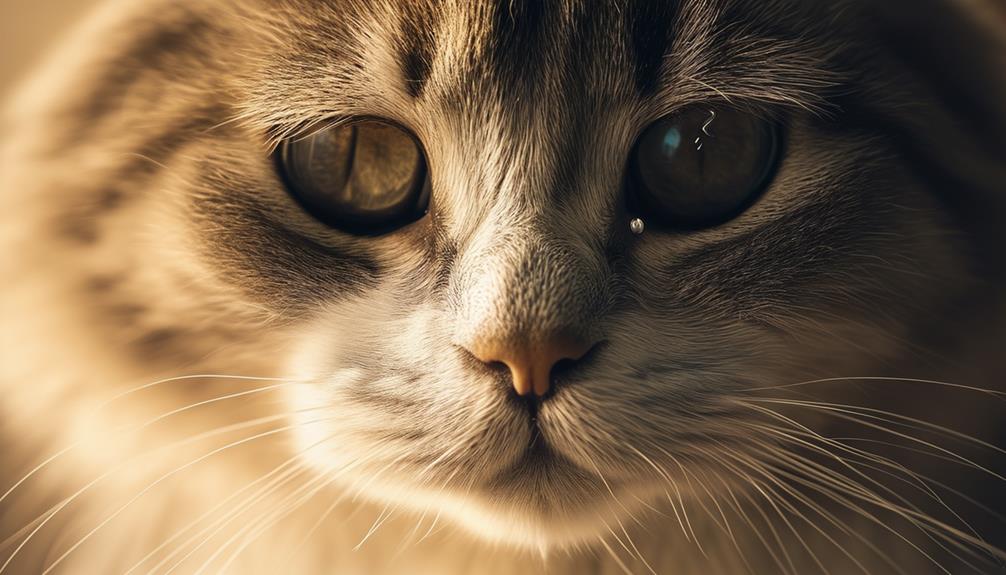
Contrary to popular belief, cats do not shed emotional tears as a means of expressing their feelings. Unlike humans, their tear production is primarily for maintaining eye health, not an emotional response.
Cats communicate their emotions through behaviors such as purring, hiding, or changes in appetite.
Evolutionarily, as solitary hunters, cats have learned to mask vulnerabilities, avoiding visible signs of distress.
Emotional cues in cats are more nuanced, relying on vocalizations and body language rather than tears.
Understanding this helps pet owners better interpret their cats’ needs and emotions, fostering a closer bond.
Addressing Persistent Tears
While understanding that cats do not cry for emotional reasons, it is important to address the physical causes behind persistent tears to guarantee their overall health and comfort.
Persistent tearing can indicate underlying issues such as allergies, infections, or blocked tear ducts.
For instance, eye infections like conjunctivitis can lead to excessive tear production, resulting in discomfort and potential vision problems.
Certain breeds, such as Persians, are prone to narrower tear ducts, exacerbating the issue.
Observing symptoms like redness, eye discharge, or changes in behavior can help identify the root cause.
Promptly consulting a veterinarian is essential for accurate diagnosis and treatment, ensuring your
Regular monitoring and care can greatly improve your
Providing Comfort and Relief
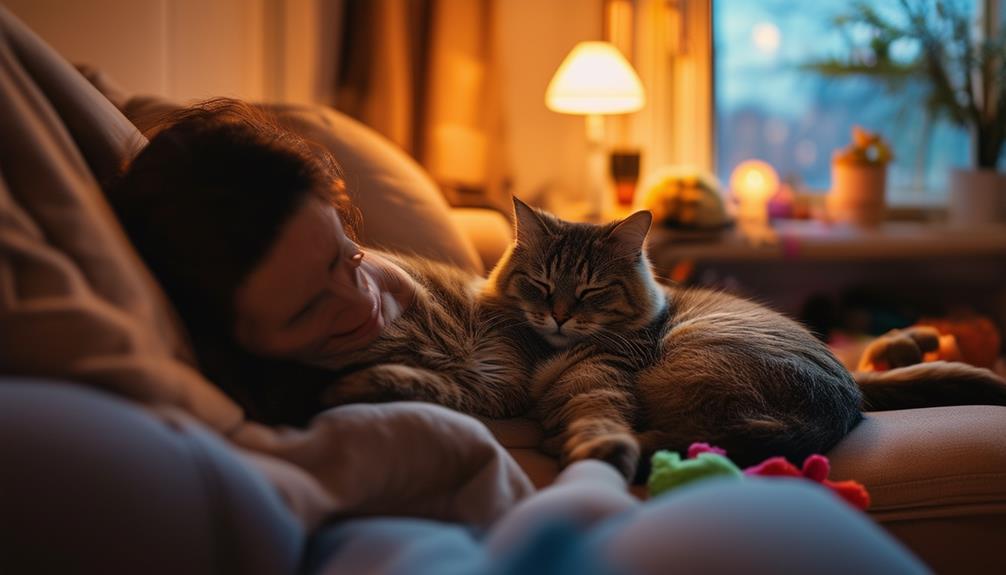
Consistently cleaning your
This simple act, performed gently with a damp, soft cloth, helps maintain eye hygiene and reduces the risk of infections.
Enhancing ventilation and air quality in your home can greatly minimize allergens, reducing tear production.
Consulting with a veterinarian about potential dietary adjustments can also offer relief, as some ingredients might trigger excessive tearing.
Regularly check for foreign objects in your
By taking these steps, you can ensure your
Conclusion
Understanding the reasons behind a
Why ignore the signs of discomfort when proactive care can prevent complications? Monitoring changes in eye health and seeking veterinary advice when needed can provide relief and comfort, ensuring that a beloved pet remains healthy and content.
